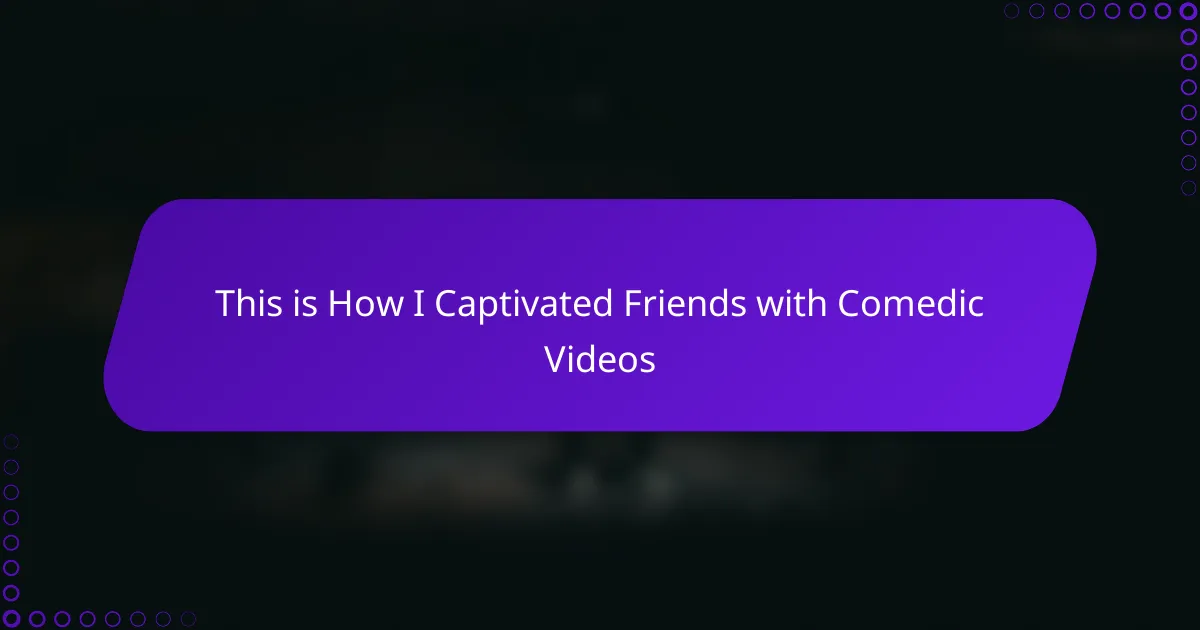Key takeaways
- Funny videos create shared experiences that foster connections and enhance camaraderie among viewers.
- Key elements of comedic content include timing, relatability, and surprise, which keep audiences engaged and entertained.
- Authenticity and audience interaction are essential for captivating viewers and enhancing the viewing experience.
- Improving comedy skills involves experimenting with styles, learning from feedback, and embracing spontaneity to connect more deeply with an audience.
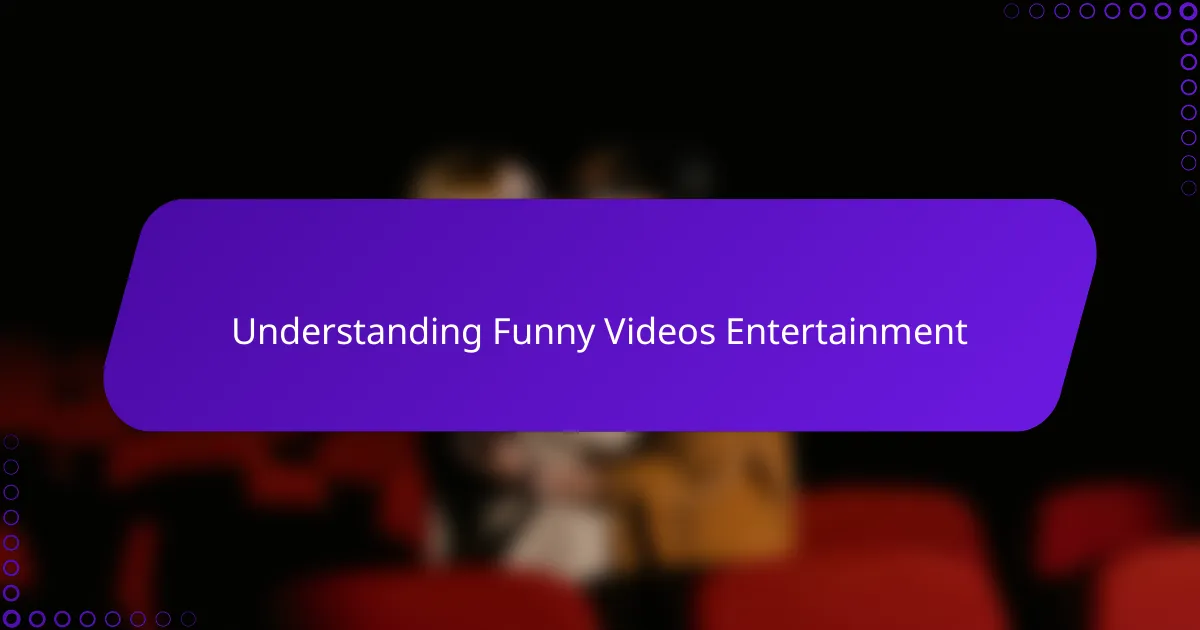
Understanding Funny Videos Entertainment
Funny videos entertainment is more than just a way to pass the time; it taps into our natural desire to connect through laughter. I remember the first time a simple clip made me laugh so hard it brought my friends together, breaking the ice in an instant. Why do these moments feel so powerful? Because humor creates a shared experience that’s both spontaneous and genuine.
When I dive into funny videos, I notice how quickly they capture attention—they’re short, sharp, and hit just the right emotional chords. Have you ever caught yourself replaying a clip just to relive that burst of joy? That’s the magic of well-crafted comedy: it’s relatable, surprising, and emotionally resonant, making us want to share it immediately with others.
Understanding why certain videos become hits is part science, part intuition. From my experience, the best funny videos balance timing, unexpected twists, and everyday situations that everyone can relate to. Isn’t it fascinating how a simple joke or funny scenario in a video can create instant camaraderie among friends? That’s the heart of funny videos entertainment.
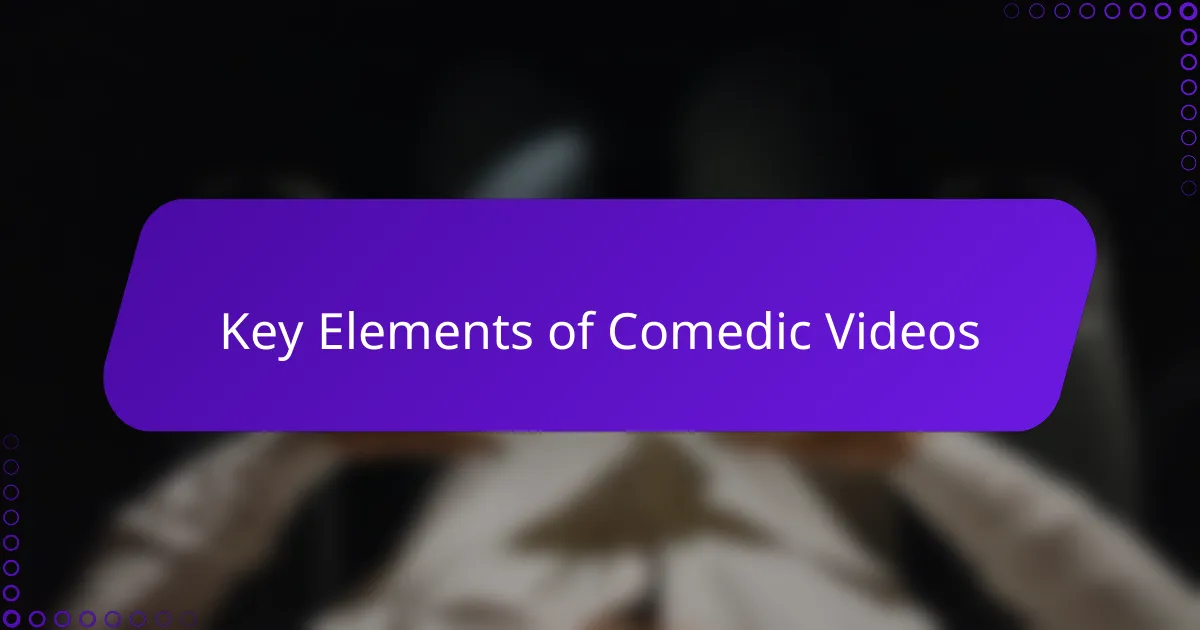
Key Elements of Comedic Videos
What really makes a comedic video stick with people? For me, timing is everything. I recall a video where the punchline landed just as a character made a goofy face—it was that perfect split-second pause that turned a simple joke into something unforgettable. Have you noticed how a well-timed pause or reaction can make you burst out laughing unexpectedly?
Another key element is relatability. I find that the funniest clips often reflect everyday moments—those little awkward or silly situations we all face. When I watch those, it feels like the creator is saying, “Hey, I get you,” and that connection makes the humor hit harder. Don’t you think humor that echoes our own experiences brings people closer together?
Surprise also plays a big role. I’ve seen videos that start off normal, then suddenly twist in an absurd or unexpected way, catching me completely off guard. That jolt of unpredictability keeps me glued to the screen, and it’s the kind of humor I love sharing with friends. Isn’t it exciting when a video takes a sharp turn you didn’t see coming?
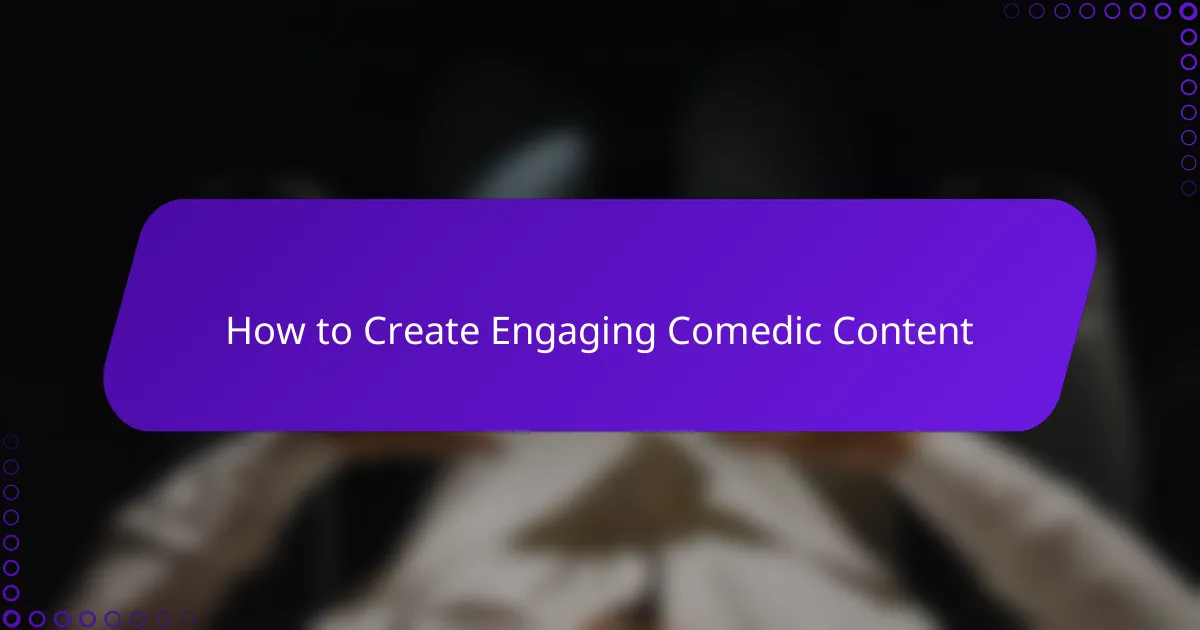
How to Create Engaging Comedic Content
I’ve learned that creating engaging comedic content starts with understanding your audience’s everyday quirks. When I craft a video, I try to zoom in on those small, awkward moments we all experience—like attempting a fancy dance move and failing spectacularly. Doesn’t capturing these relatable blunders make the humor feel more genuine and inviting?
Timing, of course, is my secret weapon. I once recorded a short clip where a perfectly timed reaction—a surprised double-take—turned an ordinary joke into something my friends couldn’t stop quoting. That split-second pause, that beat between setup and punchline, is what really hooks viewers and keeps them coming back for more.
But I also believe a little unpredictability spices things up immensely. One time, I thought I had a straightforward gag, but by throwing in an unexpected twist right at the end, the laughter skyrocketed. Have you noticed how those surprises feel like a playful nudge, reminding us that comedy is as much about delight as it is about connection?
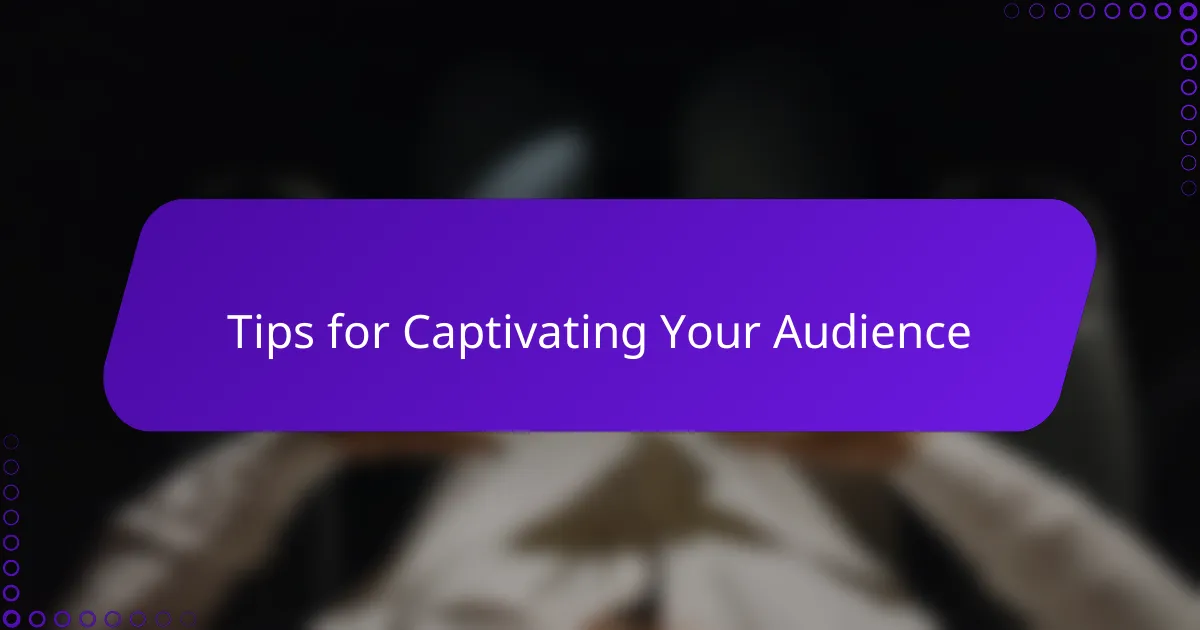
Tips for Captivating Your Audience
One thing I’ve found crucial in captivating an audience is keeping your videos short and punchy. Have you ever sat through something that dragged on and lost your attention? That’s why I make sure each second counts, delivering laughs quickly so viewers stay hooked from start to finish.
Engagement also thrives on authenticity. When I let my genuine reactions and personality shine through, my friends respond more warmly and feel like they’re part of the joke. Isn’t it amazing how sharing a simple, heartfelt chuckle can create a sense of closeness, even through a screen?
Finally, don’t underestimate the power of involving your audience directly. I sometimes ask questions or drop hints that invite viewers to guess what’s coming next, turning passive watching into an interactive experience. Have you noticed how anticipating a punchline makes the payoff feel even more satisfying? That anticipation keeps people glued and eager for the next clip.
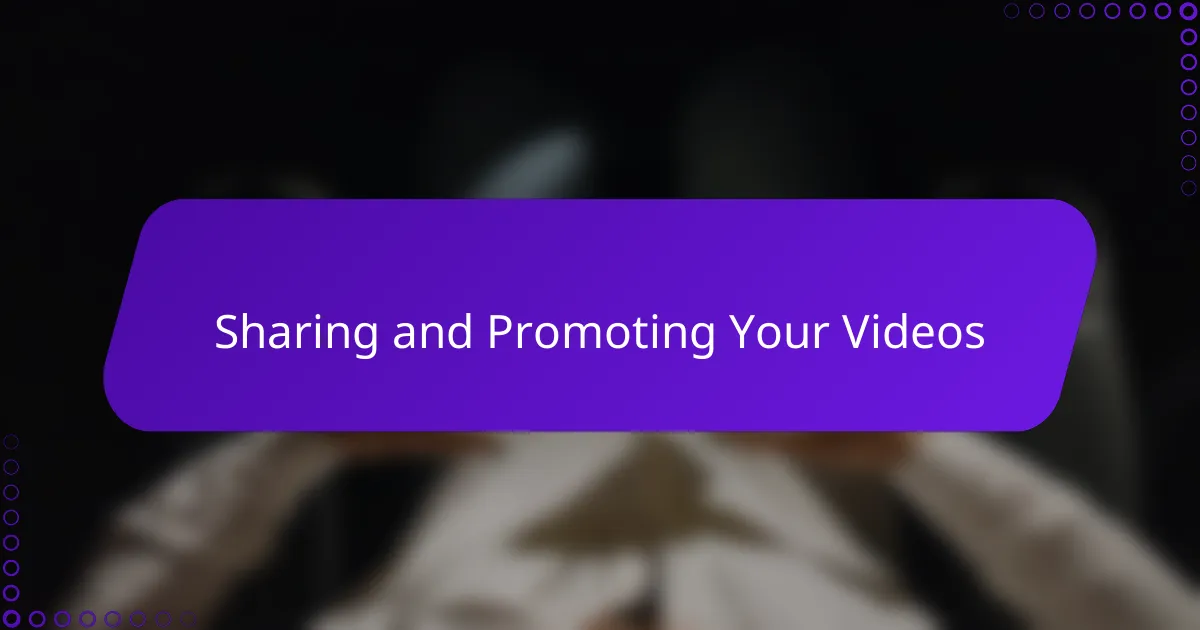
Sharing and Promoting Your Videos
Sharing my comedic videos feels like passing around a secret joke that only my circle understands. I usually start by posting them on platforms where my friends hang out most—whether it’s a group chat or social media. Have you noticed how sharing a funny clip at just the right moment can spark a chain reaction of laughs and comments that make the whole experience even better?
Promotion isn’t just about blasting your video everywhere; it’s about knowing where your audience is and engaging with them genuinely. I find that tagging friends, using relevant hashtags, or dropping the video in communities with shared interests really helps the humor spread naturally. Don’t you agree that a well-targeted share feels more like a thoughtful recommendation than annoying self-promotion?
Sometimes, I experiment with timing too—posting a clip when people seem most likely to unwind and scroll through funny content, like evenings or weekends. From what I’ve seen, a little planning behind sharing can boost a video’s reach without making it feel forced. Isn’t it satisfying when a video you’ve made catches on and becomes the highlight of a friend’s day?
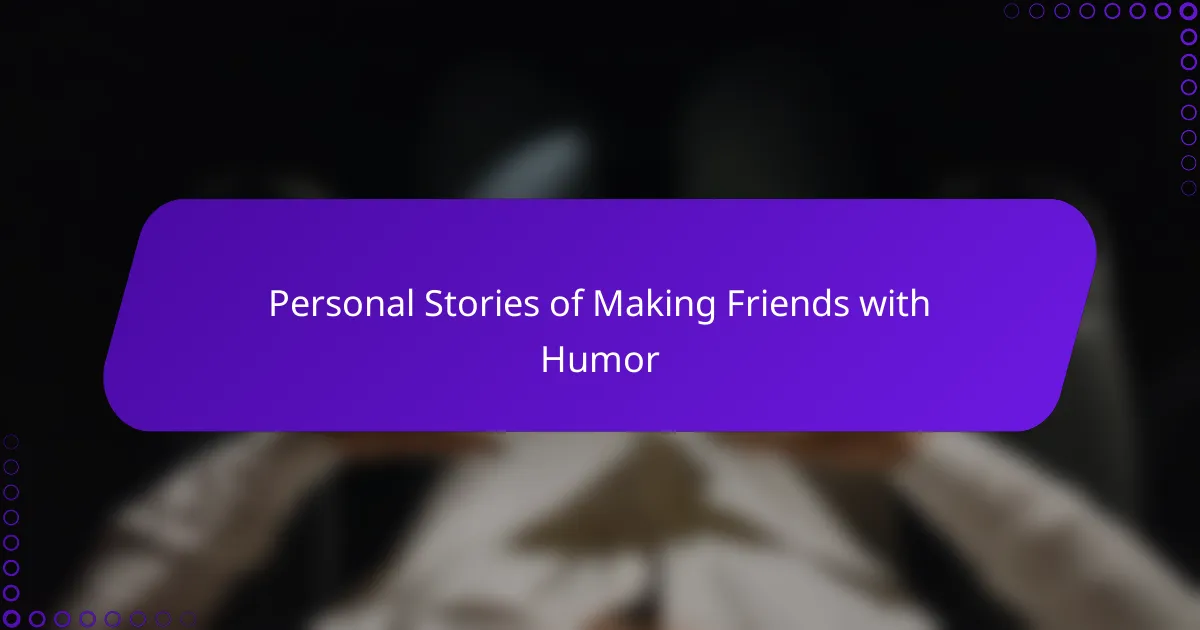
Personal Stories of Making Friends with Humor
I remember the first time I shared a goofy video in a group chat—it was nothing fancy, just me tripping over my own feet. But the burst of laughter that followed was instant, and suddenly, strangers in the chat turned into friends who were eagerly waiting for my next silly clip. Hasn’t that moment when humor bridges the gap between people felt like magic to you, too?
There was another time at a casual get-together when I played a comedic video that poked fun at everyone’s awkward dance moves. I noticed how it lightened the mood, and before I knew it, laughter was echoing around the room, creating an unspoken bond among us. Don’t you think humor has this effortless way of breaking down walls and inviting people in?
Sometimes, it’s not even about perfect punchlines but about showing your true self. Sharing my raw, offbeat humor gave my new friends a glimpse of who I really am—a little imperfect but always up for a good laugh. Isn’t that kind of openness what makes friendships feel genuine and lasting?
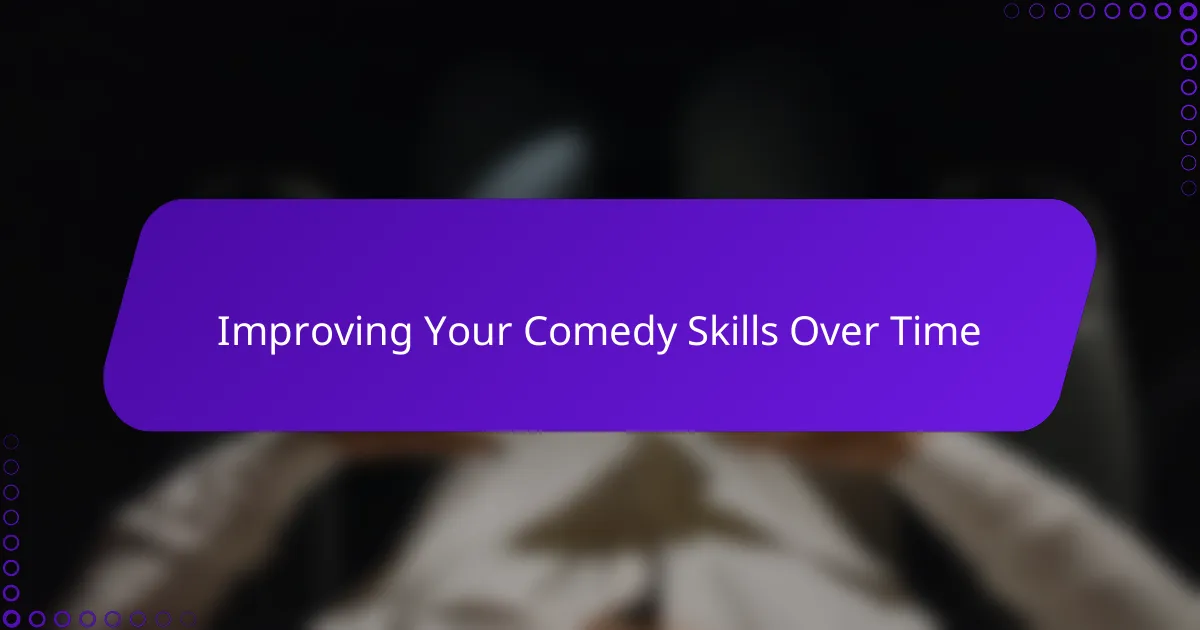
Improving Your Comedy Skills Over Time
Getting better at comedy isn’t something that happens overnight. From my experience, it takes experimenting with different styles and learning what genuinely makes people laugh. Have you ever noticed how sometimes your funniest moments come from least expected places? That’s where real growth begins—by paying attention and being willing to adapt.
I used to think that delivering punchlines perfectly was all that mattered, but over time I realized it’s more about timing and authenticity. One awkward pause or an honest reaction can elevate your humor way beyond rehearsed lines. Isn’t it amazing how spontaneous moments often spark the biggest laughs?
Also, keeping track of what works and what doesn’t has helped me refine my comedic instincts. After sharing a few videos, I started noticing patterns in my friends’ reactions, which guided me to focus on certain topics or delivery styles. Have you tried reflecting on feedback like that? It’s like having a personal comedy coach helping you improve bit by bit.
